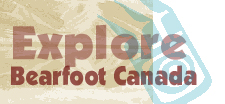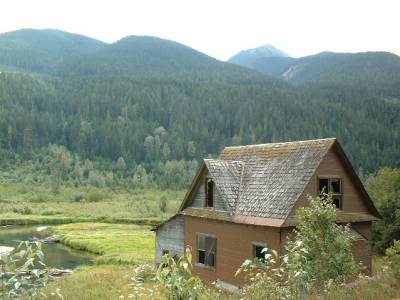Includes: The communities of Vernon, Armstrong and Enderby. Boutique Shopping, Hotels, Heritage Features, O'Keefe Ranch, Agritourism Attractions, Wineries, Museums, Art Galleries and Performance Venues, Murals, Cheese Factory, Caravan Farm Theatre, Art Studios, First Nations.
The northern most part of the Okanagan Valley is where rolling semi-arid grasslands, orchards and vineyards give way to the fertile dairy and ranchland of the Spallumcheen Valley and the beginning of the vast Shuswap Region. It is here that we will find the rural communities of Armstrong and Enderby, both rich in farming history. And hidden here and there among the magnificent pines and rolling hills of this area are bits of magic.
One of these magic spots is The Caravan Farm Theatre. The Caravan Farm, just outside the community of Armstrong is one of BC's most popular and unique theatre destinations. This 45 acre site is both a working farm and a creative landscape set for a hardy and creative band of professional thespians who stage new, original work for both summer and winter seasons. Whether it's a musical tribute to small town heroes or an elaborately costumed production of Orwell's Animal Farm, the Caravan Farm Theatre company never fails to provide an amazing outdoor theatre experience under the Okanagan night sky.
The City of Armstrong is located on Highway 97A in the Spallumcheen Valley, 19 miles north of Vernon and 26 miles (42 km) southeast of Salmon Arm. Armstrong is named after E.C. Heaton Armstrong, a London banker who helped finance the Shuswap and Okanagan Railway in 1892 and local development at the turn of the century. Heritage buildings lining the streets lend an authentic 'old west' feel and the influence of Dutch immigrants settling in the valley after the Second World War is still well-represented in Armstrong's reputation as a hub of cheese production. Although the large Armstrong Cheese plant is no longer in production, the cheesemaking tradition continues stronger than ever in the wonderful artisan cheeses of the Village Cheese Company where you can tour and taste your way through a huge range of locally made treats.
Armstrong is also home to the largest agricultural exhibition outside of Vancouver, the Interior Provincial Exhibition (IPE) which takes place every year in early September. Visitors can also explore the weekly Armstrong Farmer's Market. The Armstrong-Spallumcheen Museum and Art Gallery on Pleasant Valley Road (located on the site of the old Armstrong Machine Shop) houses over thirty historical displays, replicas of the railways, a schoolhouse, a grocery store, a blacksmith shop, and a comprehensive archive of photographs, newspapers and maps. Other interesting Armstrong spots for visitors to check out are The Old School House, one of the original educational institutions of British Columbia, the 1892 Armstrong Hotel, and Canoga Carriages, where the art of horse-drawn carriages continues to thrive.
The idyllic riverfront community of Enderby is located on Highway 97A, 10 miles (16 km) north of Armstrong and 16 miles (26 km) southeast of Salmon Arm. The Shuswap River wends through the town, against the dramatic backdrop of the steep volcanic Enderby cliffs, which tower high above. Local legend has it that when viewed from a certain angle, the ridge resembles the head of the Neanderthal Man who guarded the northern gateway to the Okanagan Trench in the days of yore.
Enderby and the gentle waters of the Shuswap River have played a key role in the history and growth of the North Okanagan as a vital transportation route for the Shuswap Indians and the early European settlers. It was in the vicinity of this river that the Spallumcheen tribe of the Shuswap Indians lived for hundreds of years, hunting and fishing along its banks. And it was just south of the present townsite that overlander Alexander Leslie Fortune pre-empted land in 1866, thus becoming the first white settler in the North Okanagan. Fortune's place on the bend in the Shuswap River made an ideal stopping spot for steamboats and paddlewheelers from Kamloops shipping supplies to settlers in the Okanagan. With the completion of the Shuswap and Okanagan Railroad in 1892 and the construction of a flourmill, sawmill and brickyard by 1895, the small town began to grow and prosper. The business district expanded accordingly, and the decision was made to incorporate the city in 1905.
The Shuswap River has retained its importance as a navigable river, but canoeists and kayakers have taken the place of steamboats. The river now links the small-developed communities in the rural district, from Kingfisher in the east to Mara in the north, and the city of Enderby remains the centre of services for the rural area.
The historical Walking Tour of Enderby takes in many of the fascinating heritage buildings still standing in the town. A superb booklet and map are available at the Visitor Info Centre. The walk includes the Enderby and District Museum and features an imaginative look into the colourful history of the area. The changing displays feature the Shuswap Indians, entertainment, logging, farming and transportation, from 1880 to the present but Enderby's unique nature-based experience can be the whole reason to pull over and visit, beginning with the Jim Watt Riverwalk, a scenic walk along the beautiful Shuswap River. Wood ducks, herons, osprey, eagles, ravens, and songbirds can be seen along the trail, while turtles and beaver are a common site near the island. The Shuswap River is also famous for its spawning grounds east of Enderby, where coho, spring and sockeye salmon return each year to spawn in the gravel beds.
Our tour of the countryside will find us following the Shuswap River to Mabel Lake. In the late seventies, Chinook salmon stocks were close to extinction on the Shuswap River. Concerned local residents started a salmonid enhancement program in the Kingfisher area. Since 1981, the Kingfisher Environmental Interpretive Centre has evolved from a community run hatchery to the current capacity to rear 500,000 fry annually, and offers walking trails and self-guided natural history trails.
Stretching from Enderby Cliffs to Mabel Lake, these same rolling hills of beautiful alpine meadows make the Hunters Range ideal for hiking and horseback riding. The Enderby Cliffs promise a terrific view of the valley and the meandering Shuswap River, as well as a close look at the volcanic rock and fossil sites. Permission is required to cross private property to hike up the cliffs, and trail maps and notes are available from the Enderby Visitor Info Centre.
A perfect day can get better with a visit to one of the gems of this experience, Lorenzo's Café, where some of the best food and entertainment in the region can be found.



